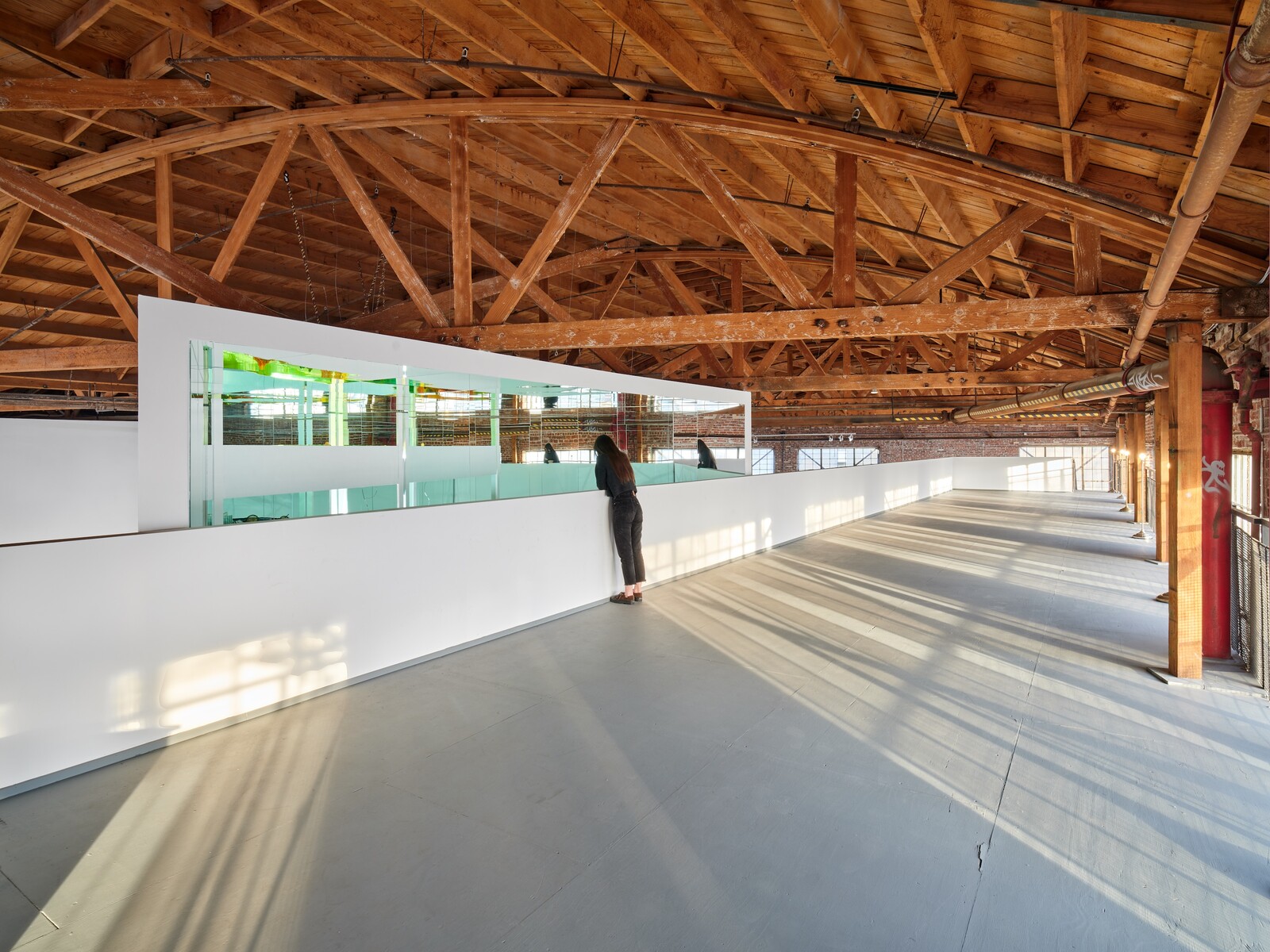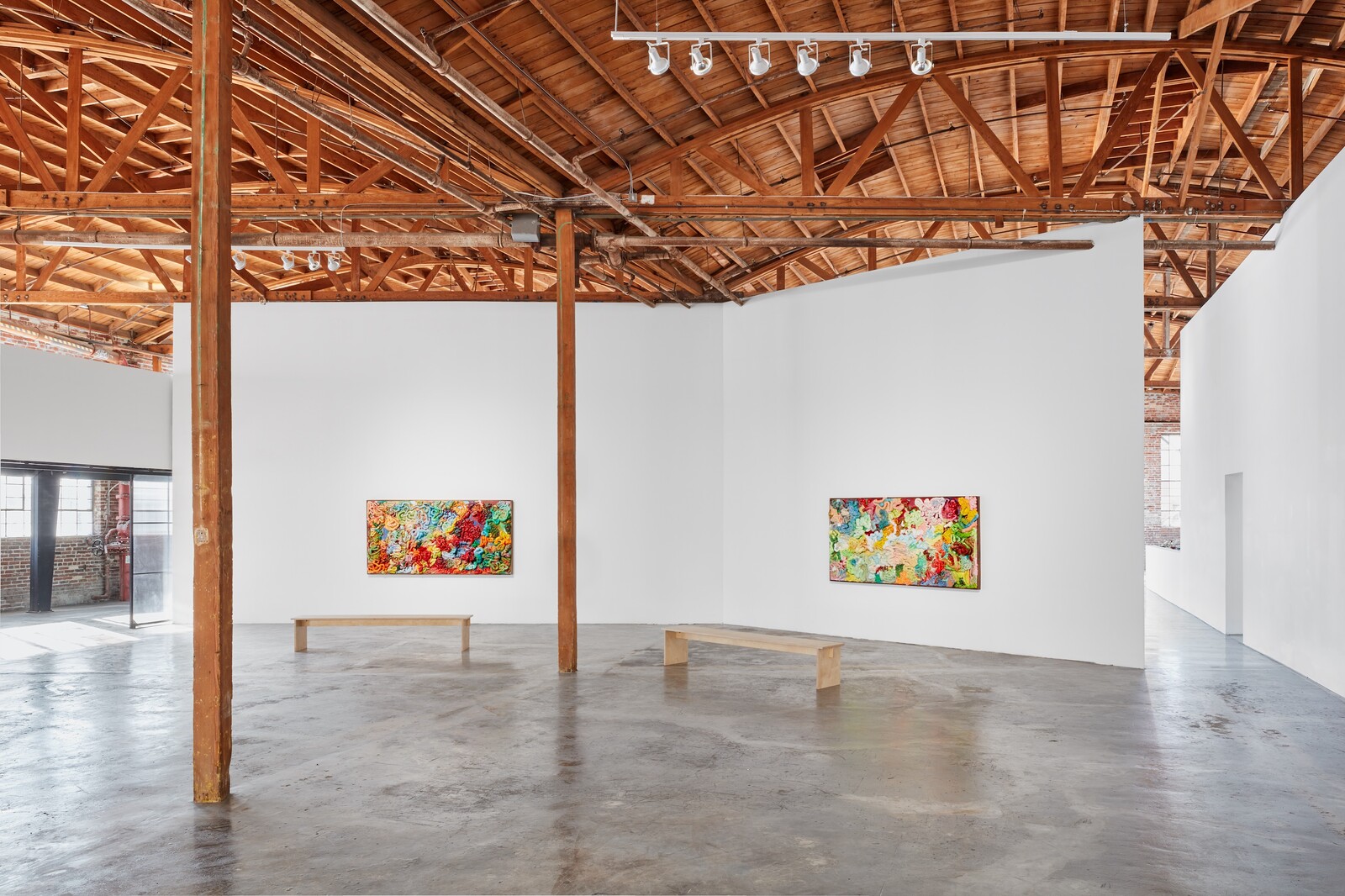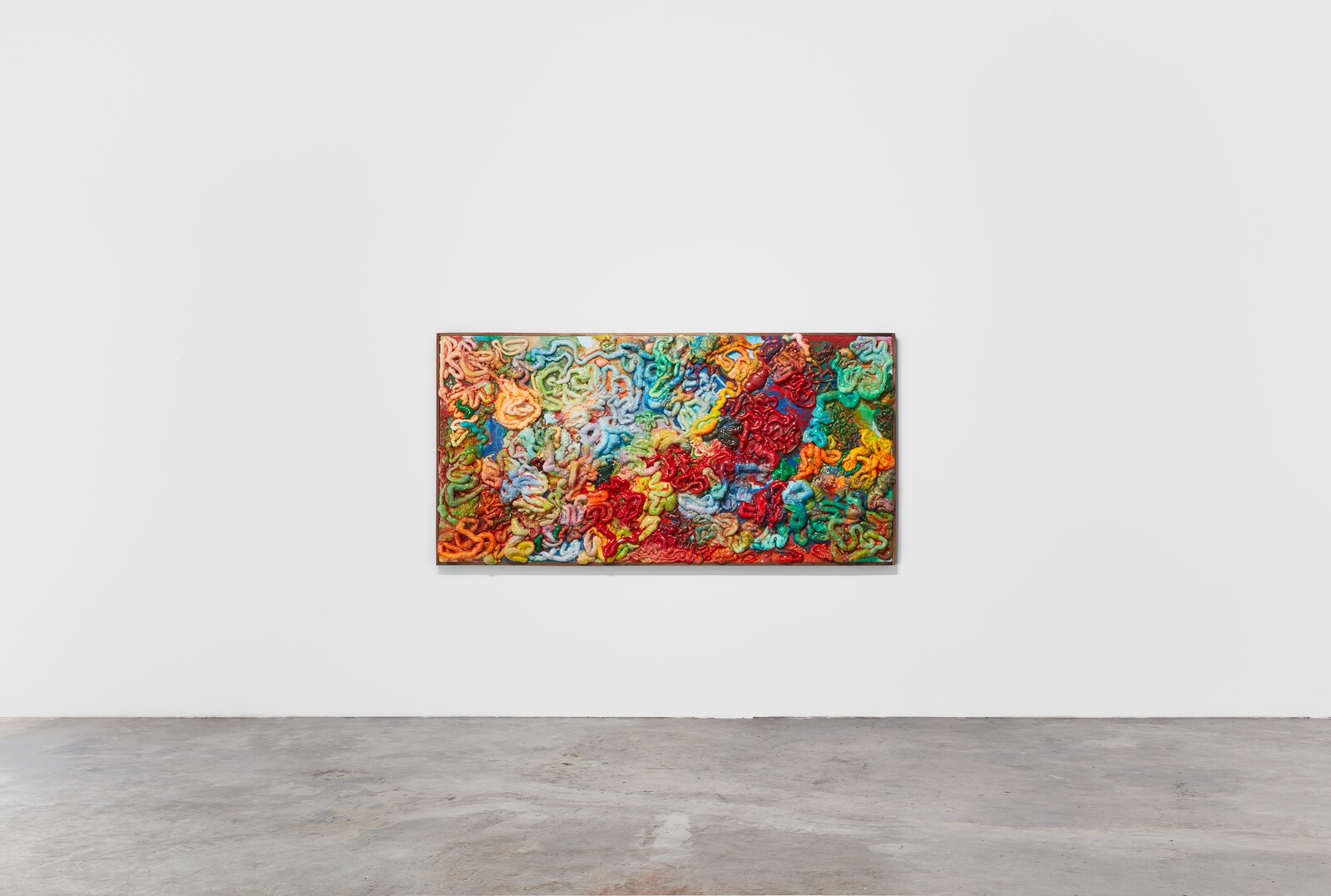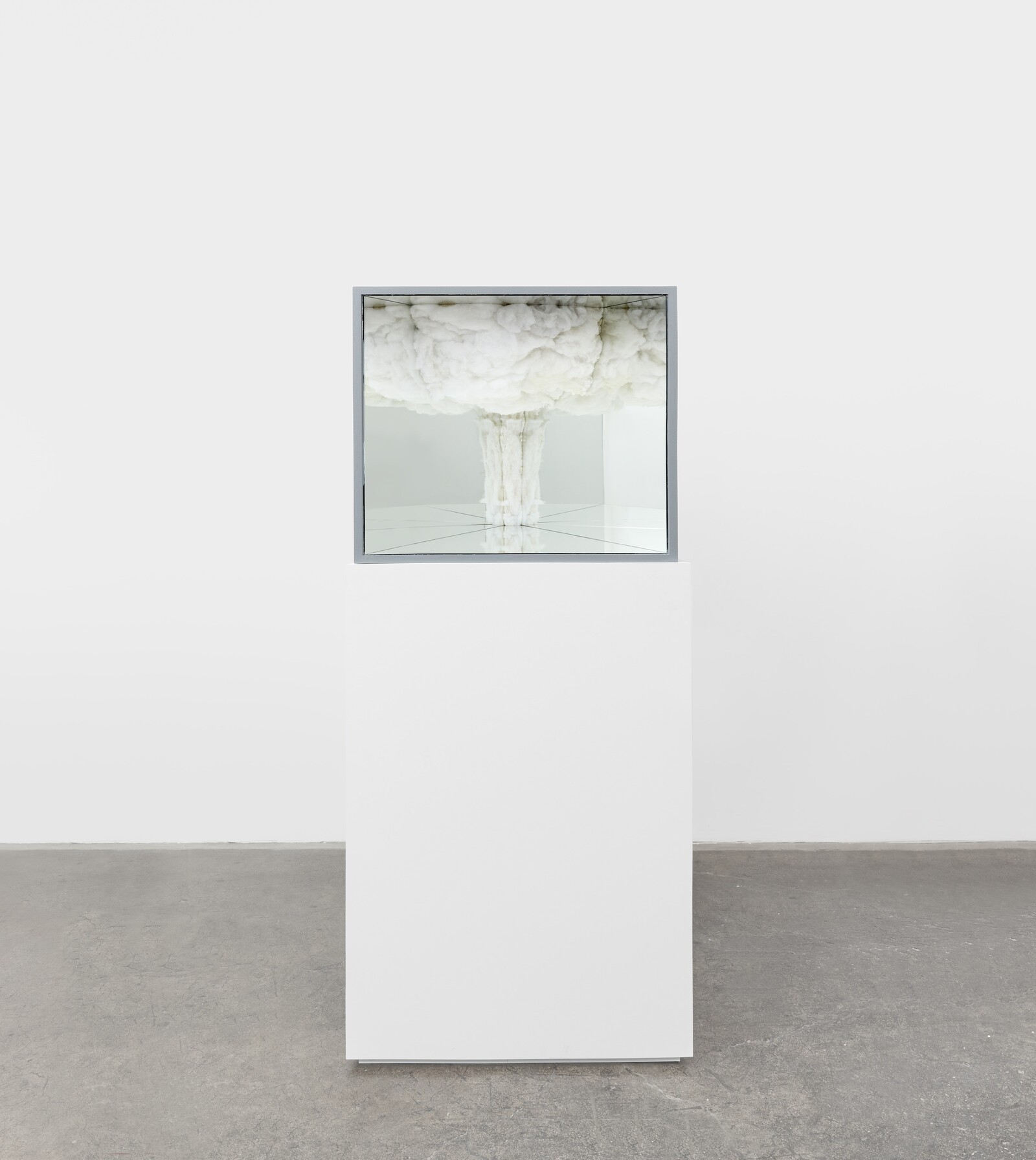Samara Golden’s “Guts,” the inaugural exhibition at Night Gallery’s new venue in downtown Los Angeles, offers a direct, physical encounter with fantastical perceptual experience. In this warehouse space, Golden has installed a huge mirrored box titled Guts (2022). Looking into it from one of two walkways reveals three white “floors,” each of which holds two “scenes” (one above and one below) relating to Golden’s shifting psychological states over the past few years: a messy living room with its toppled furniture, lamps, and crushed beer cans; an iridescent blue water-like surface; and an array of snaky, muted pink and lavender intestinal shapes that evoke the title of the installation, which gives its name to the exhibition. The effect is of one building contained within the atrium of another, extended vertically in a vertiginous series of reflections. It is a demanding task to distinguish between “real” installations and their mirrored reproductions.
Guts builds on Golden’s previous site-specific installations using mirrored structures. The Meat Grinder’s Iron Clothes (2017), for instance, was included in the 2017 Whitney Biennial and staged handmade furniture to create miniature “sets” of scenes of everyday life. In the context of a shift towards virtuality and digitization accelerated during the Covid-19 pandemic, Guts imagines an enhanced reality set firmly in the tangible world. Drawing on imagery from the artist’s subconscious, the installation also conjures the ghostly, emptied-out office buildings that became ubiquitous across the United States during the shift to remote working. Here, the gutted insides of these corporate megaliths have been replaced with ludic and lucid scenes that drift between Californian luxury (a glimmering, neatly tiled pool, a stray towel poised on its edge) and abjection (a swath of fluorescent guts and bright red crabs, or loosely formed, equally vibrant bodies fabricated in expandable foam and splayed across a gold floor). The guts of the title might refer to the courage it takes to survive in these disorienting times, or call to mind the gooey underbelly of corporate capitalism.
Guts are also present in two other works in the exhibition, Guts painting 1 and Guts painting 2 (both 2022): roughly four-by-eight-feet sculptural paintings that extend outward from the wall eight inches, slews of colorful intestinal shapes reminiscent of those in the installation, but compressed into tight walnut frames. Another spray foam sculpture, this one of a miniature, cloud-like bomb mid-explosion, is held within a triangular mirror in Nuclear Bomb (2022), a maquette of the technique Golden employs at a larger-than-life scale in the main installation.
What sets Golden’s environments apart from the kind of mirror-based, immersive artworks that foreground spectacularism—centering the viewer and inviting selfie-based interaction with the work in lieu of a more potentially transformative experience—is that they hold the viewer at a distance. In this sense, Guts performs a Brechtian distancing effect that heightens your awareness of the constructed nature of the spectacle rather than promoting uncritical immersion within it. You witness the installation from the outside: peeking your head into the hallucinatory space and observing yourself at its edges from unfamiliar angles, a bird’s-eye or profile view, it is easy to confound yourself with other members of the crowd. Guts allows us to see ourselves as the other, on the precipice, creating the illusion that we are part of the work, but only in the act of looking—we are staged in the work as its audience, not to be confused with its content. The imposed constraint of viewing angles and the impossibility of physically entering the installation forces viewers to take in the work from afar. In this sense, illegibility is inscribed within the work itself; an unusual phenomenon in an era in which voyeurism and hyper-visibility have become habitual, if not altogether expected.
The physicality of the installation also gives way to inevitable imperfections that virtual technologies are careful to weed out: as one peers into the tunneling layers, they become increasingly warped, the slight gaps between the adjacent mirrors causing distortions as the reflections spiral up and down. While VR is in a sense self-reflexively documentary—its images have already been transcribed into data and code, captured by dint of their creation—Golden’s work notably resists documentation: efforts to capture the hypnotic visual experience of her work will inevitably fall short. In the midst of a cultural turn toward virtuality encouraged by tech corporations, Guts reminds us that real materials can still produce unreal effects.





